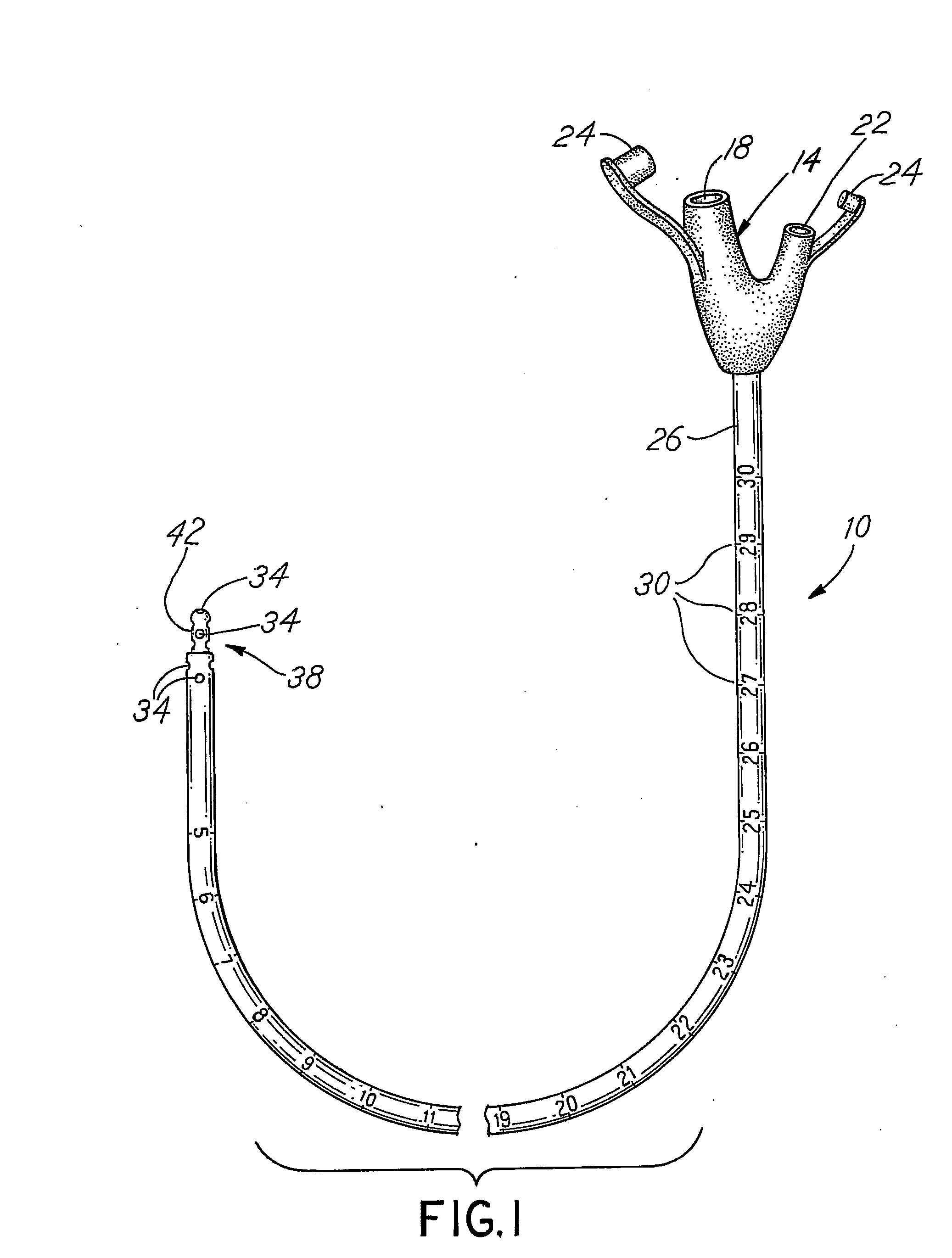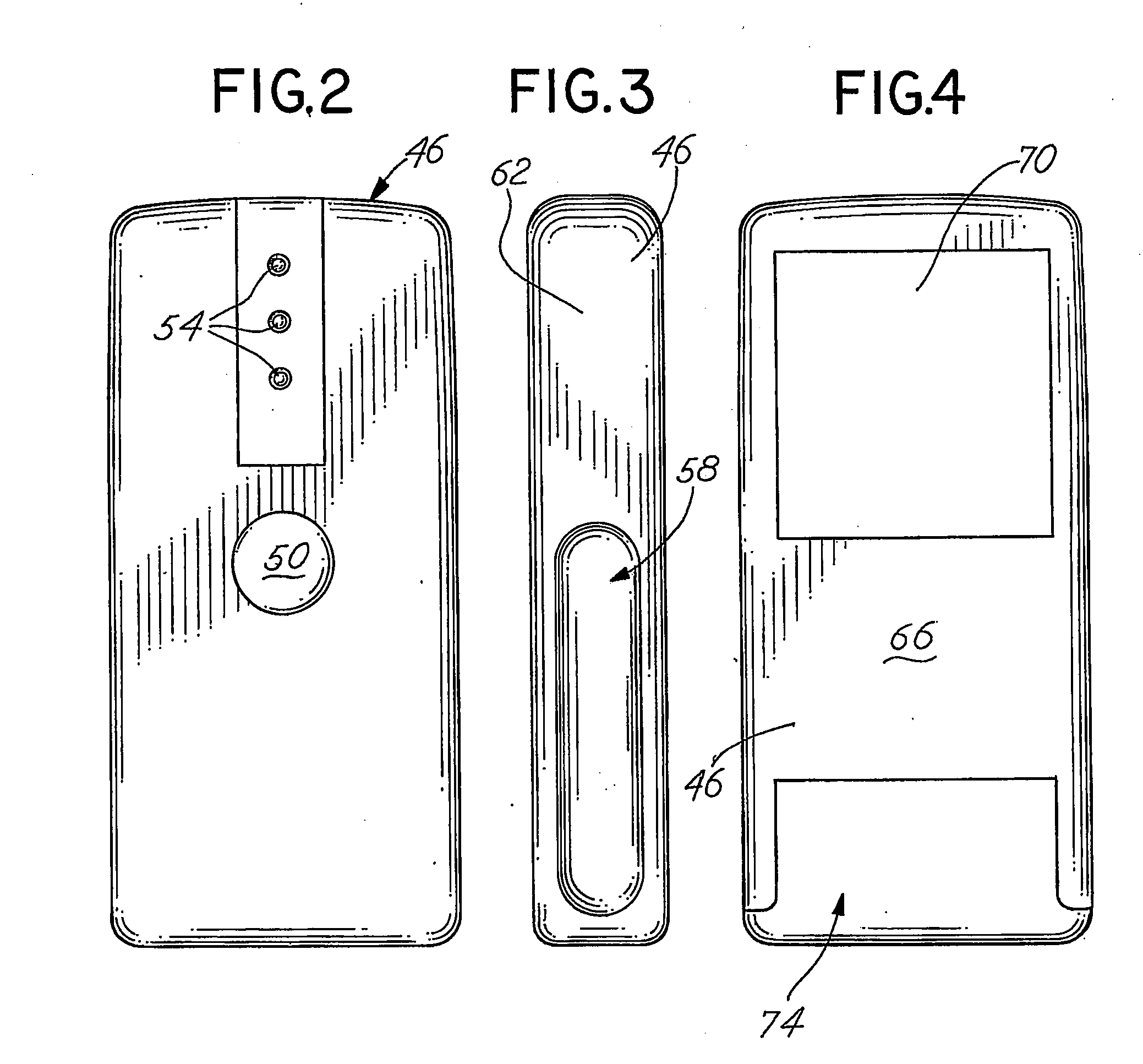Methods and systems for locating a feeding tube inside of a patient
a technology for feeding tubes and patient, applied in the field of methods and systems for locating feeding tubes inside of patients, can solve the problems of patient problems, serious problems, and difficult to confirm the placement position of feeding tubes,
- Summary
- Abstract
- Description
- Claims
- Application Information
AI Technical Summary
Problems solved by technology
Method used
Image
Examples
Embodiment Construction
[0025]Proximity sensors are sensors that are able to detect the presence of nearby objects without physical contact. A proximity sensor emits an electromagnetic or electrostatic field, or a beam of electromagnetic radiation such as infrared, for example. The proximity sensor looks for changes in the field or return signal. The object being sensed is often referred to as a proximity sensor target. Different proximity sensor targets demand different sensors. For example, a capacitive or photoelectric sensor might be suitable for a plastic target, and an inductive proximity sensor may be suitable for a metal target. Proximity sensors have a maximal distance at which they can be detected. The range in which the sensor can be detected is called the “nominal range.” Certain sensors may have the ability to adjust the nominal range, or provide a way to report graduated detection distance. Proximity sensors have a high reliability and a long functional life because of the absence of mechanic...
PUM
 Login to View More
Login to View More Abstract
Description
Claims
Application Information
 Login to View More
Login to View More - R&D
- Intellectual Property
- Life Sciences
- Materials
- Tech Scout
- Unparalleled Data Quality
- Higher Quality Content
- 60% Fewer Hallucinations
Browse by: Latest US Patents, China's latest patents, Technical Efficacy Thesaurus, Application Domain, Technology Topic, Popular Technical Reports.
© 2025 PatSnap. All rights reserved.Legal|Privacy policy|Modern Slavery Act Transparency Statement|Sitemap|About US| Contact US: help@patsnap.com



